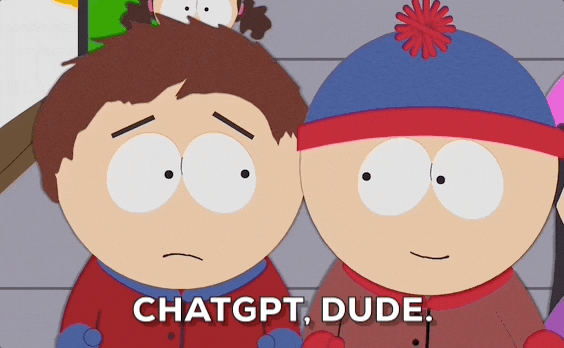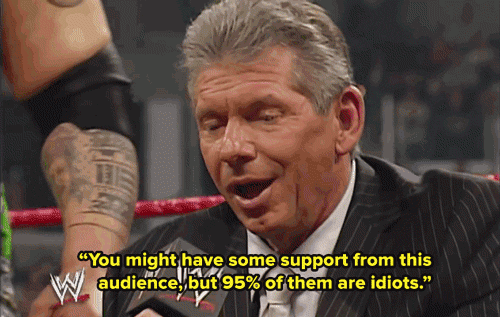UP + AI pt2
Overthinking the sports business, for money
The Bundle 2.0
I need you to do me a favour and have a look at something, then come back to tell me what you think.
As regular readers will know, I've been noodling with LLMs and various AI tools.
See previous - The Unofficial Second Brain
The exam question is how to unlock value in the UP archive of content, across 500 podcasts and about as many Substack newsletters.
In addition to the umbrella Unofficial Partner podcasts, we’ve created podcast and event platforms around our own IP, to more accurately service niches within the sports business.
Each of the sub brands below are often recorded as live podcasts and form the basis of networking opportunities. They can standalone or fit as capsules in to other people’s events, be that Leaders or a VIP client round table aka ‘velvet rope shit’.
Our current roster looks like this:
Expected Goals - The business of women’s football.
The Bundle - Sports media rights and streaming marketplace.
Other People’s Money - Finance, private equity and investment.
The Buy Side - Brand marketers talking about sport and sponsorship.
Inside Edge - The business of cricket
Wedge Issues - The business of golf
The Big Idea - Creativity and campaigns.
Each of these is monetised by sponsorship and advertising across podcasts, events and newsletters.
But what if we added another layer?
Testing UP+
This week I got a glimpse of how the B2B publishing model is going to evolve.
Let’s take The Bundle, our popular series on the media market, featuring myself, Yannick Ramcke and Murray Barnett.
This week’s episode went out as usual.
The conversation goes from RTL buying Sky Germany to F1 and Apple and the blurring of the lines between ESPN and the NFL.
Previously, we’ve published a separate newsletter, called The Bundle Bulletin, made up of the raw prep notes written by Murray and Yannick, which we collaborate on via a Google Doc.
Murray and Yannick are proper subject experts.
I’m very much not.
But I’ve learnt loads just being part of that process of swapping potential stories, collecting useful links and making random notes on the stories that have caught our attention this month.
Now, we can share these notes in a more useful form, via Google’s NotebookLM language model product.
This takes the Bundle notes and other material and makes it the source material of a private, curated LLM focused only on sports media topics.
Here’s the temporary link:
Press the button and you’ll be presented with this page:
As an experiment we’ve curated the source material from recent Bundle episodes and notes, plus other work that is relevant to sports media and streaming.
Then the fun starts. As with any LLM, you can get the machine to do clever things with the sources.
Here’s a mind map that references the recent Warner Brothers Discovery story, which links back to the relevant part of the transcript or source article.
Here’s a video explainer explaining the process in more detail.
This week Google released an update that allows you to turn the source material in to video.
The "Studio" panel gives you other modes for engaging with the content in this notebook.
Audio and video overviews: Listen to an AI-generated discussion exploring the most engaging ideas and facts from the sources.
Mind Maps: Visualize the main topics and related ideas from your sources in a branching diagram, helping you see connections and get a quick overview. If you click on any Mind Map node, NotebookLM will automatically create a prompt in Chat to help you understand that topic.
Reports: This notebook also includes a collection of text-based summaries in different genres, like FAQs, Study Guides, or Timelines.
This tool and versions of it, will very quickly become the expected product in the publishing world.
For example, here’s how The Economist is using it.
Adding this type of functionality to insight decks and white papers is how we’ll consume sports related thought leadership.
If you have an idea that you’d like to collaborate with UP on, get in touch.
It takes some doing to write 800 words praising The FA’s work in rebuilding a high performance culture as a pre-piece for the women’s Euro final, praising Greg Dyke, Martin Glenn, Dan Ashcroft and the decision making of the management team and NOT reference Mark Bullingham, the bloke who’s been CEO for six years and in charge of commercial and performance before that.
Weird no?
See previous: In praise of Mark Bullingham’s massive balls
Laugh for the president
"The Washington "Whatever's" should IMMEDIATELY change their name back to the Washington Redskins Football Team. There is a big clamouring for this," wrote President Trump on Truth Social.
Hours later, he said he "may put a restriction on them that if they don't change the name back to the original 'Washington Redskins,' and get rid of the ridiculous moniker, 'Washington Commanders,' I won't make a deal for them to build a Stadium in Washington."
We can’t leave this topic without referencing The Dan Snyder Effect:
The Washington story gets referenced in this piece on Trump’s impact on comedy:
If you need any more clarity about what comedy is, here’s one of Trump’s favorite comedians (“I absolutely love that Colbert’ got fired. His talent was even less than his ratings. I hear Jimmy Kimmel is next. Has even less talent than Colbert! Greg Gutfeld is better than all of them combined.”) offering what has been identified as a joke: “You know what?” Gutfeld said on Fox News. “I’ve said this before: We need to learn from the Blacks, the way they were able to remove the power from the N-word by using it. So from now on, it’s ‘What up, my Nazi?’ ‘Hey, what up, my Nazi?’ Hey, what’s hanging, my Nazi?’”
Laugh? I thought I’d die! This joke is funny, because people are constantly saying that Gutfeld is a Nazi, and he is getting a little sick of it. So, to dodge the Nazi allegations, he’s riffing on the N-word! This is comedy now!
Comedy is legal again. You are free to say whatever you want, provided it’s a slur. You must say it, or President Trump won’t approve your new stadium! No, that’s not a joke. That’s completely serious.
From the same piece, this feels true.
I particularly like the line: ‘They are so glad not to have to remember anymore that other people in the room’.
Tragedy, to paraphrase Mel Brooks, is when I cut my finger. Comedy is when you fall into an open sewer and die. More and more people are getting pushed into open sewers lately. Boom times for comedy. Boom times for laughing at. From the open sewer, you can hear a lot of laughing. They are so glad not to have to remember anymore that other people are in the room. What an enormous relief! Finally, they can say it! That is the project of Trumpism: becoming the only people in the room again. Becoming both the protagonists and the intended audience, the only people whose laughter counts.
What you think is funny depends on what you believe to be true. When you make a joke, you are asking someone to look at something and see the same thing you see. When the response is laughter, it is a way of making eye contact, of looking through the world at one another. That is the terror of bombing onstage: the realization that what you are seeing is not what everyone else is seeing. The anxiety that you have got the world by the wrong end, that you are alone in what you think.
But there are two reasons you can laugh. One is recognition, and the other is coercion. Some jokes are funny only with a power differential to back them up. This is the kind of comedy that’s legal now: the joke whose punch line you’re afraid to be. The kind of joke you have to take. Laugh, so they’ll know you’re one of them. Laugh, or he’ll kill you. Laugh, and maybe you won’t be next.
See previous.
NB. There’s no newsletter next week due to an Unofficial Hiatus, aka holiday.









Really love the notebook idea, super helpful